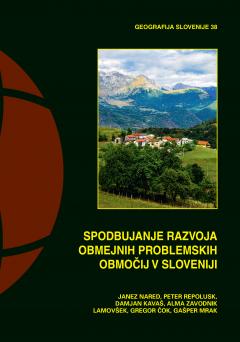Spodbujanje razvoja obmejnih problemskih območij v Sloveniji
Obmejna območja so zaradi bližine državne meje in zaradi perifernosti v primerjavi s preostalim državnim ozemljem pogosto manj razvita. Zato jim regionalna politika posveča posebno pozornost, v Sloveniji že od leta 1975. Trenutno je kot obmejno problemsko območje opredeljenih 90 občin. V želji po njihovem celostnem razvoju je Vlada Republike Slovenije pripravila Program spodbujanja obmejnih problemskih območij, ki naj bi povezal in uskladil prizadevanja vseh ministrstev pri razvoju teh območij. Pri podpori priprave programa smo izhajali iz dosedanjih izkušenj spodbujanja manj razvitih območij, v želji po čimbolj celostni obravnavi pa smo naslavljali kakovost bivanja, gospodarski razvoj, dostopnost storitev splošnega in splošnega gospodarskega pomena, demografske spremembe, trajnostni razvoj, trajnostno mobilnost, čezmejno sodelovanje ter celoten razvojni oziroma sistemski okvir spodbujanja razvoja posameznih območij. Glavni namen je bil odgovoriti, kako je možno celovito spodbuditi razvoj obmejnih problemskih območij. Da bi sistem spodbujanja obmejnih problemskih območij čimbolj prilagodili potrebam posameznih občin, smo najprej izdelali tipologijo teh območij, kar nam je omogočalo primerjavo območij med sabo in zlasti z drugimi občinami v Sloveniji.
Nato smo pripravili vprašalnika za predstavnike občin in prebivalcev obmejnih problemskih območij, na podlagi njihovih odgovorov pa smo podrobneje določili tematske sklope, jih preučili s pomočjo analize kazalnikov ter izbrali ukrepe s podrobnejšimi opisi, ki lahko skupaj ali posamič izboljšajo življenjske razmere na obmejnih problemskih območjih.
Prenosi

Zbirka
Licenca

To delo je licencirano pod Creative Commons Priznanje avtorstva-Nekomercialno-Brez predelav 4.0 mednarodno licenco.
